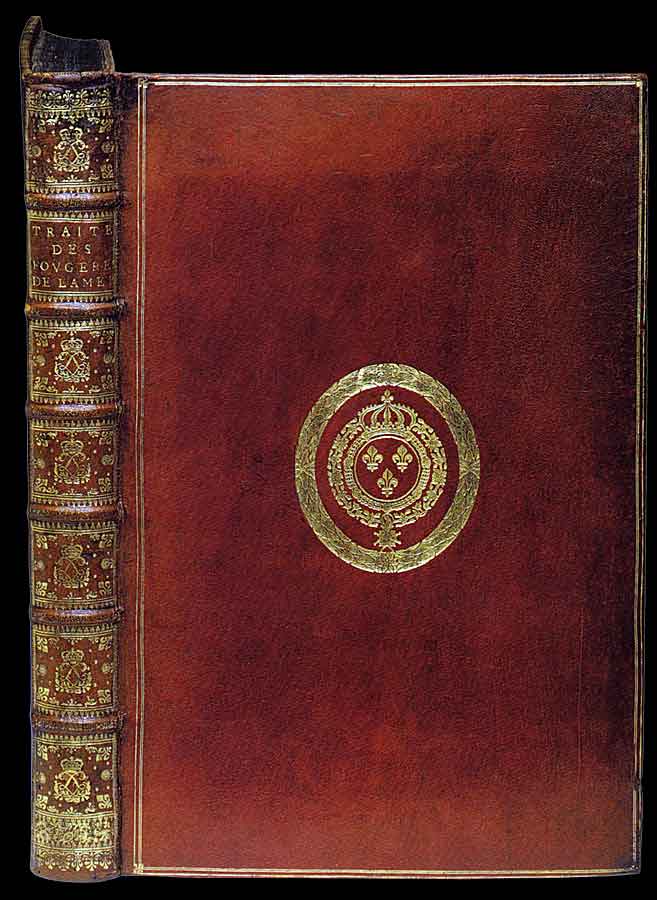

| When we look at the work and life of Luc-Antoine Boyet who started his celebrated career as a bookbinder in 1684 and went on to become the relieur du roi (official binder of the King) in 1698, we must take into account that the King for whom he was working was none other than Louis XIV, the most powerful man on the planet, some might say the greatest King that ever lived, Louis Le Grand Monarque, or Le Roi Soleil, king of France (1643-1715) who ruled his country, principally from his great palace at Versailles, during one of its most brilliant periods and who remains the symbol of absolute monarchy of the classical age. |
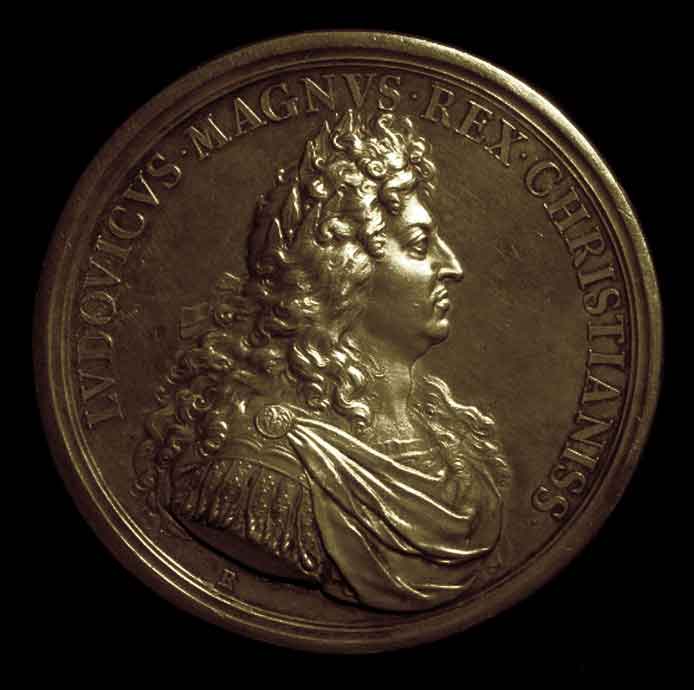
| We can imagine that Louis XIV demanded the best, and that his bookbinder would have to be a master craftsman of the highest order. It is not surprising then to find that many of Boyet's bindings have survived more than three centuries and look today almost as good as they did when they were made. Using only the best materials and proven methods, his bindings can be recognized by their outstanding quality. |
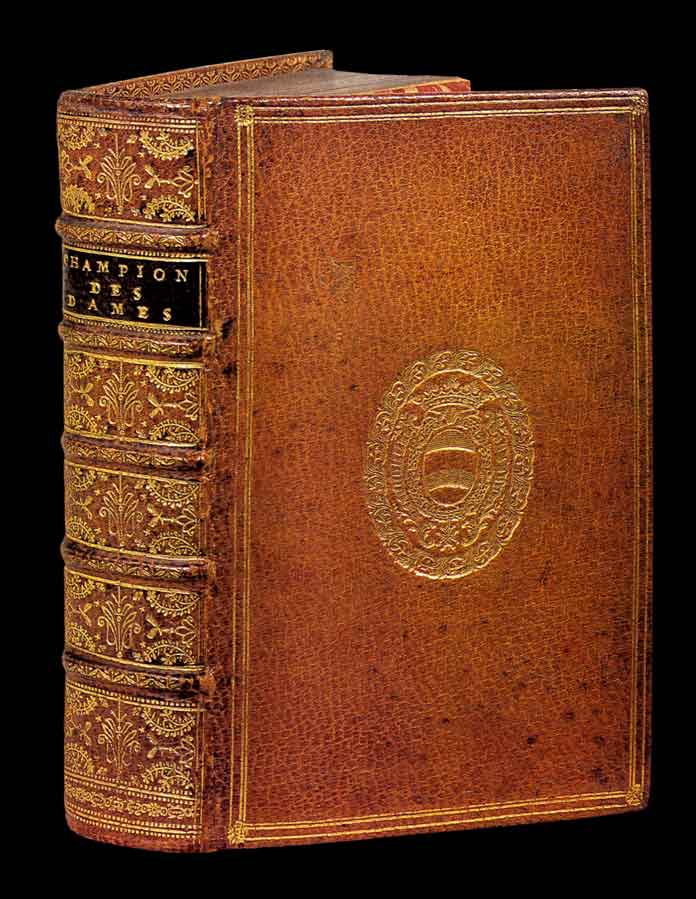
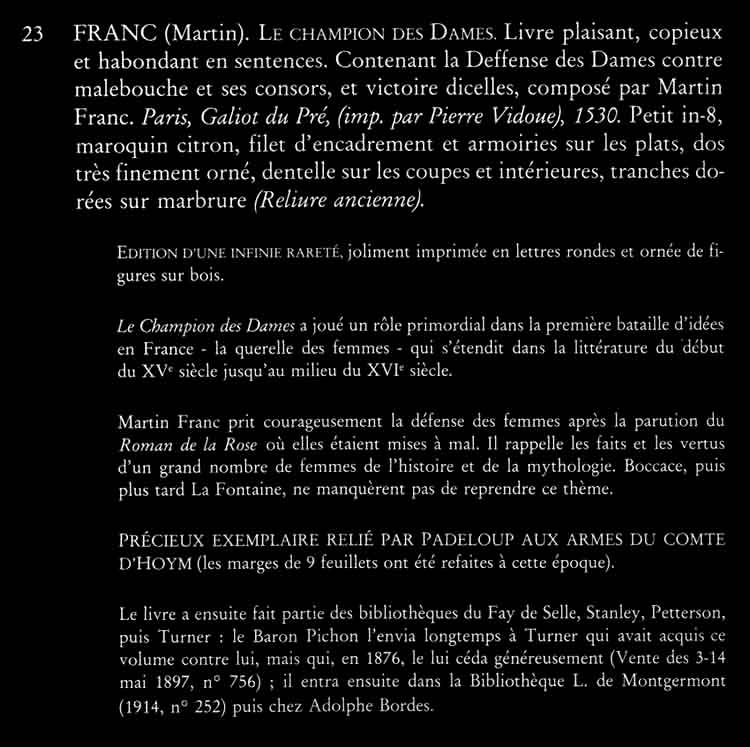
| The binding shown above as well as the description derive from a 1990 Paris auction catalogue in which this binding has been attributed to Padeloup. No one today would attribute this binding to Padeloup. Yet it has been only a few years that the work of Boyet is finally being recognized. Thoinan, in his brief biography of Boyet, mentions the fact that he may have worked for others as well as the king, particularly le comte d'Hoym, Jeanne-Marie Métivier who has written a short paper entitled Luc-Antoine Boyet, relieur de l'Imprimerie royale (1704-1723) has also brought up this issue and reproduces in her paper another Boyet binding bearing the armes of the comte. |
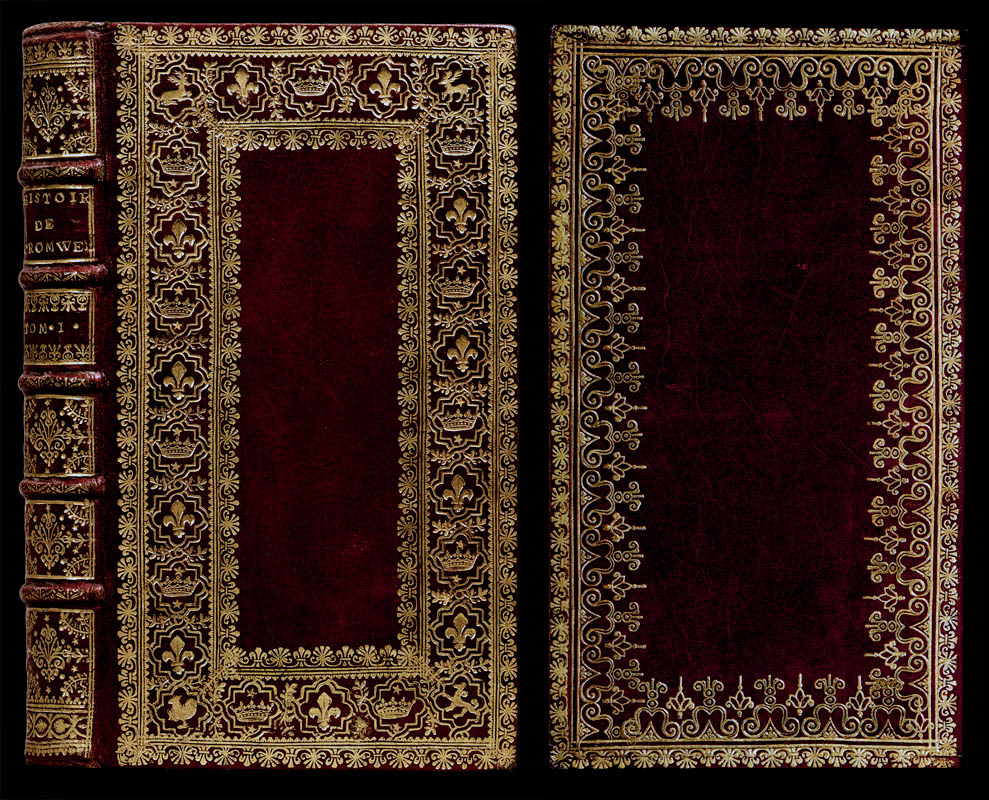
| Jeanne-Marie Métivier and Isabelle de Conihout & Pascal Ract-Madoux have made great progress in identifying bindings from the atelier of Boyet. Yet a huge amount of work still needs to be done, we are only beginning to scratch the surface when it comes the wide variety of bindings that were made by Boyet but remain unidentified or erroneously attributed to Padeloup et al. Even though we can recognize now, some of Boyet's tools, a more scientific and thorough study is needed. His tools were often copied and many palettes and roulettes that look like those of Boyet, may only be close matches. Starting with the binding shown above, Reliure dentelle La Vieuville, that can be positively identified as a Boyet, I propose that we look closely at the roulette that has been employed here extensively and shows up on many of Boyet's bindings, Isabelle de Conihout & Pascal Ract-Madoux have cataloged it as "roulette C". Below I have assembled strips of roulette C taken from binding 38 for which we have a very accurate measurement (161 x 95 mm). These I have shuffled around looking for any sort of matching detail. This roulette is well made and without any obvious flaws, however after a thorough inspection we find a small anomaly which I have marked with the green arrows. This flaw and the entire roulette is repeated every 65.53 mm (this is the distance between the red lines), which is the circumference of the wheel. While someone may be able to copy this roulette it is unlikely that they can make it run to an identical length. (click on these diagrams to see enlargements). |

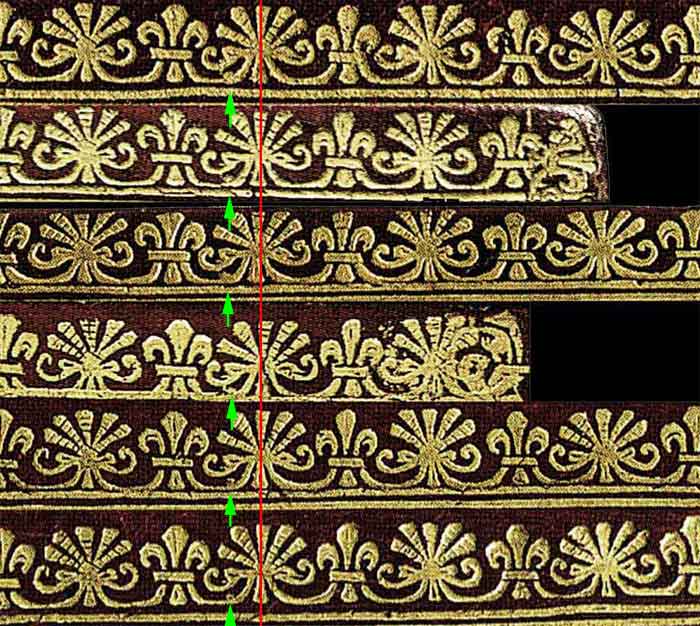
| There are in fact, a few different forms of Boyet's type C roulette, I have collected the most common below, in Comparative Diagram 2. These roulettes are hard to distinguish, perhaps the easiest way to get a quick fix on the identity of a particular type is to measure its width. I give approximate widths for the examples shown below and this could vary slightly due to a number of factors. However there is such a distinct jump in size that this way of initially identifying these roulettes should be quite reliable. |
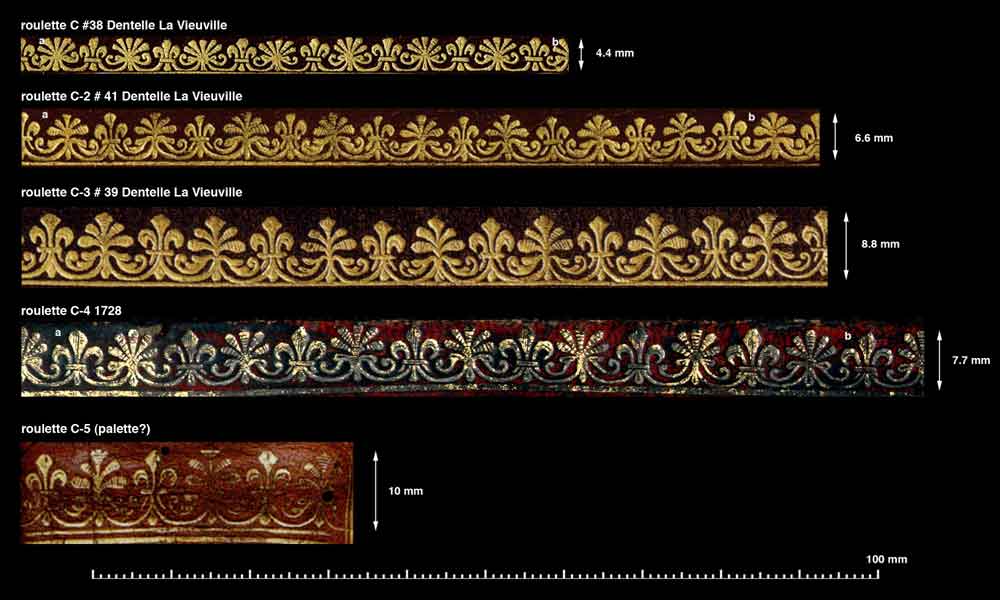
| After making Comparative Diagram 2, I decided to tackle a diagram to show the largest roulette example, C-5. This may actually be more of a palette and Boyet has certainly used it as a palette on the Royal bindings that Jeanne-Marie Métivier has presented in her paper as being authentic Boyet examples. She does not bother to elaborate on this particular tool and it may be that it existed in the royal workshops before Boyet arrived. What ever the case he did use it extensively. In the diagram below I have extracted a number of good examples and resized them to 100 percent scale at 300 dpi. These examples, have been taken from photographs of the spines and could be somewhat distorted length wise but are probably quite accurate in height. I was very lucky to be able to match up these roulette strips as the older examples appear blunt and bloated, lacking the fine detail that was present 20 years previously. However the overlay of one of the fleur de lis from the early examples that is shown in Comparative Diagram 4 proves that these strips do match up. |
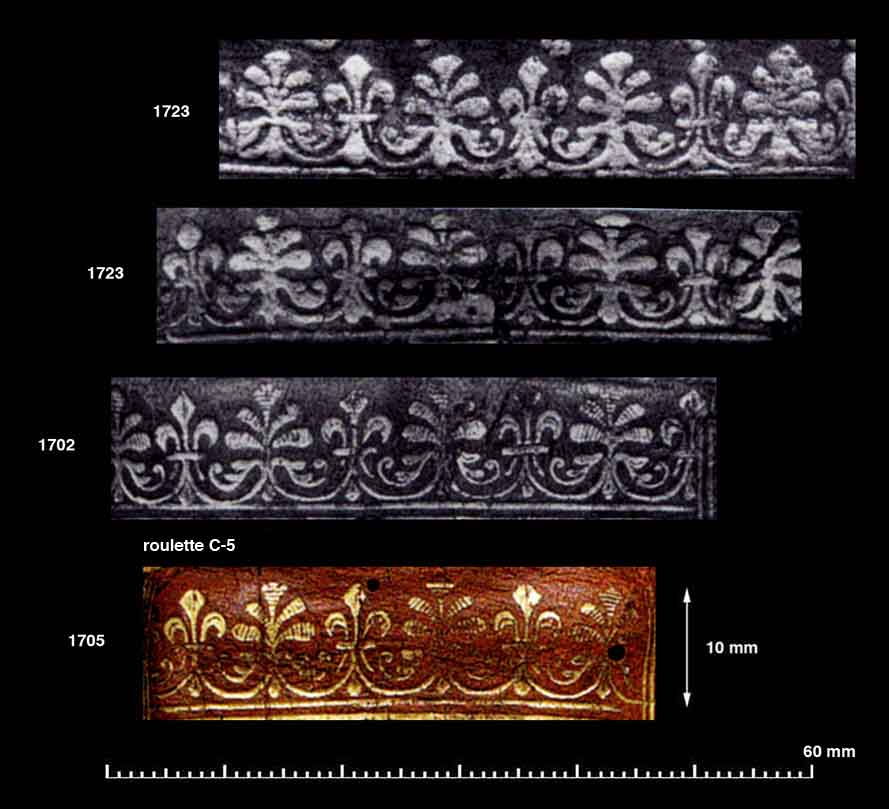
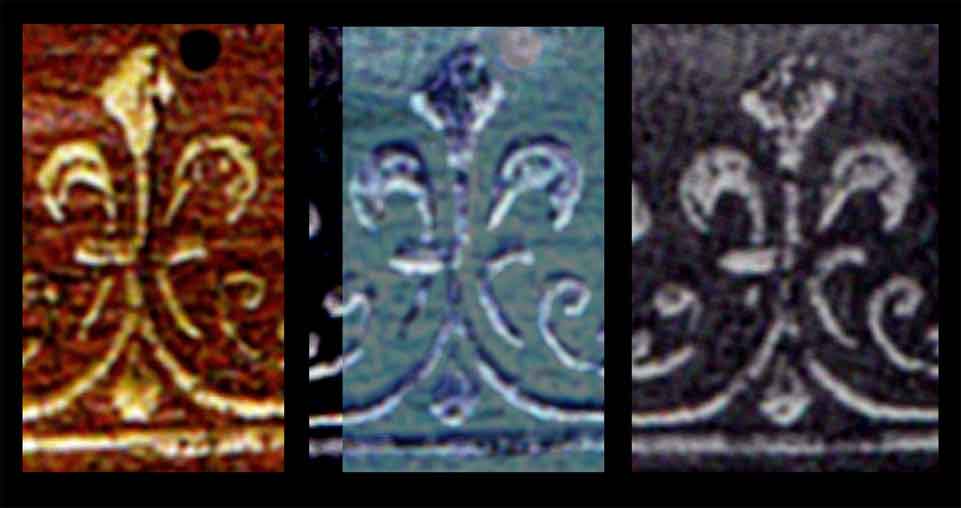
| In Comparative Diagram 4, I have taken a fleur de lis from the 1705 strip shown in color in Comparative Diagram 3, (easily identified by the worm hole nearby), and placed it over a black and white example from the 1702 strip immediately above it. I have then inverted the color of the 1705 imprint and placed it as a semi-transparent layer over the black and white imprint, this then is what we see in the middle part of the diagram, an overlay that has been shifted somewhat upwards to reveal the white imprint below. On the next page we will look at the Type A and B roulettes. |
|
go to the next page Luc-Antoine Boyet- roulette A and B. or try this page. Decorative Dentelle by Luc-Antoine Boyet |
| Click on this link to return to Virtual Bookbinding | link to the home page of cyclopaedia.org |